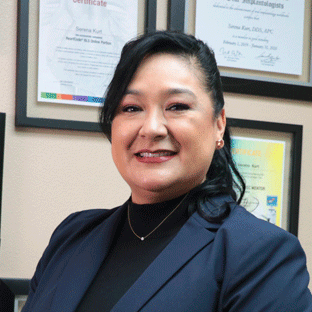Ever wonder why some smiles seem to brighten up a room? The creep may be the secret. Many people in San Diego are struggling with dental problems, which may influence their confidence and health if left untreated. However, there is a solution that can restore not only one’s smile but quality of life. We understand the local stressors at Serena Family & Cosmetic Dentistry and are there to offer accessible, effective treatments.
What is Bone Grafting?
Bone grafting is an important dental procedure to enhance the jawbone so it can support dental implants, repair bone loss, or help other restorative dental work to be performed. Think of it as putting in a strong foundation for your dental work to be stable and last a long time for future treatments.
The Process Explained
- Preparation: The process begins with a thorough evaluation of the jawbone, which includes X-rays or CT scans to check for bone volume, density, and overall health. It is at this appointment that your dentist will review your medical history, current medications, and any specific concerns to help customize the treatment to your needs.
- Procedure: The actual bone grafting involves several steps:
- Site Preparation: The area where the graft will be placed is cleaned and prepared.
- Graft Application: Depending on the source, the bone material is placed into the jaw. For autografts, a small incision might be made at the donor site to harvest bone.
- Stabilization: The graft is secured, often with a membrane or screws, to prevent movement during healing.
- Closure: The surgical site is then closed with sutures.
- Recovery: This is the stage of healing, where the bone graft starts to integrate with the existing bone. It can take from several weeks to months. During this time, patients need to pay particular attention to diet and care instructions to help them heal better. They will have scheduled follow-ups at Serena Family & Cosmetic Dentistry to check how their healing is progressing.
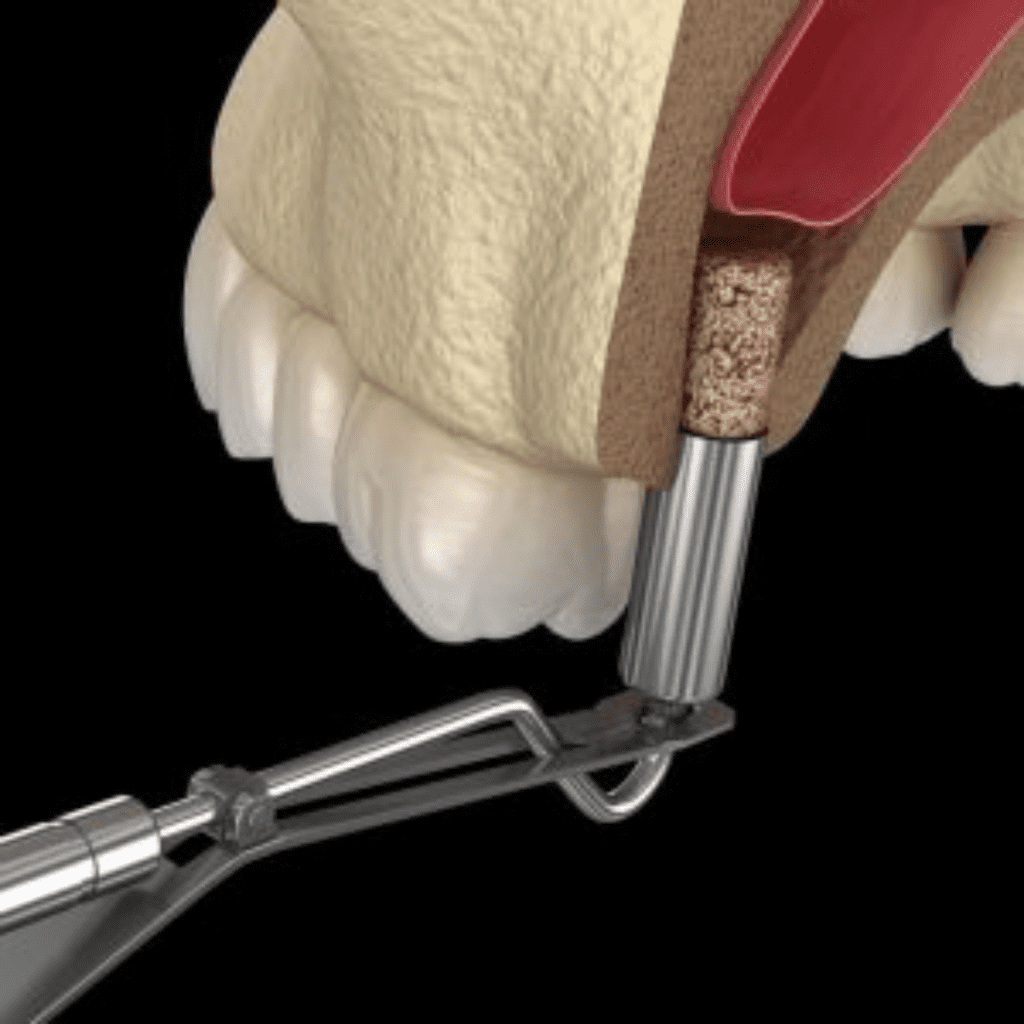
Types of Bone Grafts
- Autografts: These are sourced from your own body, guaranteeing maximum compatibility as it is your tissue. Typically, the chin, lower jaw, or hip serve as common donor sites. Although this approach provides optimal biological integration, it necessitates one more surgical site, leading to a longer recovery period and increased discomfort potential.
- Allografts: Allografts—bone from a human donor, processed to remove all living cells and thereby reduce the risk of rejection. Allografts are more common because they are readily available and because they do not require a secondary surgical site. They are sterilized to eliminate the risk of disease transmission.
- Bone substitutes: Usually taken from bovine bones, these are highly refined to enable them to integrate with human bones. They act principally as a scaffold for the growth of new bone but should be considered more like a temporary support until their new bone production begins.
- Alloplasts: Alloplasts are synthetic bone substitutes and were not mentioned. Alloplasts could be materials like hydroxyapatite or calcium phosphate. Alloplasts are an option when natural bone does not exist or when patients prefer to avoid biological materials. They do not carry the risk of disease transmission from donors but might not integrate as seamlessly as natural bone.
- Growth Factors: In some instances, bone grafting is supplemented with growth factors or bone morphogenetic proteins (BMPs) to facilitate faster healing and bone growth. These can be applied in conjunction with any of the above-mentioned types of grafts.
When Is Bone Grafting Recommended in Dentistry?
Bone grafting is a suggested procedure in many dental cases where there is insufficient quantity or quality of jawbone to support dental prosthetics or maintain oral health. Below are the conditions and reasons in detail:
- Periodontal Disease: Chronic gum disease can cause extensive bone loss around the teeth, which weakens the supporting structure. Grafting can replace this lost bone, which helps stabilize the teeth or up implant sites.
- Trauma: Such mishaps or injuries can cause fractures in the bones or loss, which will require grafts to reconstruct the contour of the jaw or to aid in future dental procedures.
- Post-Tooth Extraction: The resorption or atrophy of the mandibular bone begins after the tooth is lost. A bone graft can maintain volume; this would be an opportune time for grafting to maintain the bony architecture for implants as well as to prevent facial sagging.
- Dental Implants Preparation: For the implants to be successful, there has to be adequate bone to anchor them securely. If the bone is insufficient, grafting will be done to create a solid foundation.
- Jaw Deformities: Congenital or developed jaw abnormalities may need grafting to correct the misalignment and also enhance the bone for orthodontic treatments.
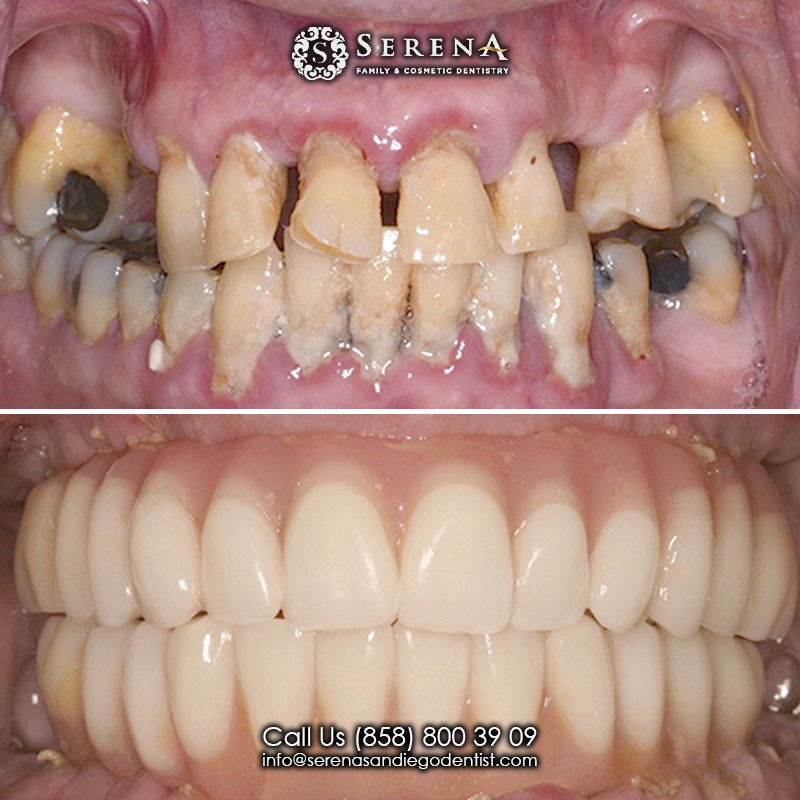
Signs You Might Need a Graft
- Teeth That Are Loose or Moving: This might mean loss of bone where the teeth roots are; it makes the teeth less stable.
- Having Trouble with Dentures: If dentures seem wobbly or hurt because there’s not enough bone support, grafting could help to make them fit better.
- Bone Loss Shown in X-rays: X-ray images or CT scans can show a problem with bone density or loss that you can’t see on the outside.
- Gum Recession It is the most common indication of bone loss. The gums recede away from the teeth, making more of the tooth visible or sometimes even exposing the root.
- Aesthetic Concerns: Loss of bone can alter facial contours. This often results in a sunken appearance, especially around the mouth.
Common Scenarios for Bone Grafting
- Before Dental Implants: Grafting forms the desired bone structure which will ensure the stability and longevity of implants.
- Post-Extraction: Grafting can be done either immediately or after a while to maintain bone density and prevent resorption.
- To Correct Jaw Deformities: Grafting can help in jaw alignment and correcting bite disorders as well as facial symmetry.
- Sinus Lift: This procedure is required when upper jaw implants are planned, and the sinus cavity is too close to the jawbone. A sinus lift with bone grafting elevates the floor of the sinus cavity, creating space for the growth of bone tissue.
- Ridge Augmentation: This procedure widens the alveolar ridge (the part of the jaw that holds the teeth) where it has become too narrow for dental implants or to support dentures comfortably.
- Periodontal Regeneration: Following periodontal surgery, bone grafts will assist in the regeneration of bone that had been lost around teeth due to gum disease.
- Socket Preservation: Grafting the socket right after tooth removal will preserve the bone density for future implant placement and will avoid surgeries that may be required in the future.
Are you put to sleep for a dental bone graft?
The type of anesthesia used for a dental bone graft varies based on the patient’s comfort level, the complexity of the procedure, and medical considerations. Here’s a deeper dive into the options:
- Not Necessarily: Most bone grafting procedures can be managed with local anesthesia alone, meaning you’re awake but the area being worked on is numb. This is often preferred for its simplicity and quicker recovery.
- For High Anxiety or Complex Cases: If the procedure is extensive or if you have significant dental anxiety, your dentist might suggest other forms of anesthesia:
Anesthesia Options
- Local Anesthesia: This numbs only the treatment area. It’s administered via injection, and you’ll feel pressure but not pain during the procedure. This method allows for immediate post-operative recovery since the effects wear off shortly after.
- Sedation:
- Oral Sedation: You take a pill before the procedure, which induces a state of deep relaxation. You’re awake but very calm, often with little to no memory of the procedure.
- IV Sedation: Also known as “twilight sedation,” this involves administering sedatives through an intravenous line. It’s more controllable than oral sedation and can be adjusted during the procedure for your comfort.
- General Anesthesia:
- Induced Sleep: You are completely unconscious during the surgery, ideal for very complex or multiple grafting procedures, or for patients with extreme anxiety or medical conditions that require total control of the patient’s airway or breathing.
- Requires Monitoring: An anesthesiologist or a dentist with anesthesia training administers and monitors this. Recovery time is longer, with a period of grogginess post-procedure.
Additional Considerations:
- Patient’s Medical History: Conditions like heart disease or respiratory issues might influence the choice of anesthesia.
- Procedure Complexity: More invasive or longer procedures might benefit from deeper sedation or general anesthesia for patient comfort.
- Recovery and Aftercare:
- Local anesthesia usually allows for same-day activities, though some rest is advised.
- Sedation might mean you’ll need someone to drive you home and you should take it easy for the rest of the day.
- General anesthesia involves a more significant recovery period, with instructions possibly including staying overnight observation, diet restrictions, and avoiding strenuous activities.
- Cost and Insurance: Different anesthesia levels can impact the cost of the procedure. Check with Serena Family & Cosmetic Dentistry for what your insurance covers.
- Pre-Operative Discussion: Before deciding, your dentist will discuss your medical history, your anxiety level, and the specifics of your case to tailor the anesthesia choice. This conversation ensures that the method chosen aligns with your comfort, safety, and procedural needs.
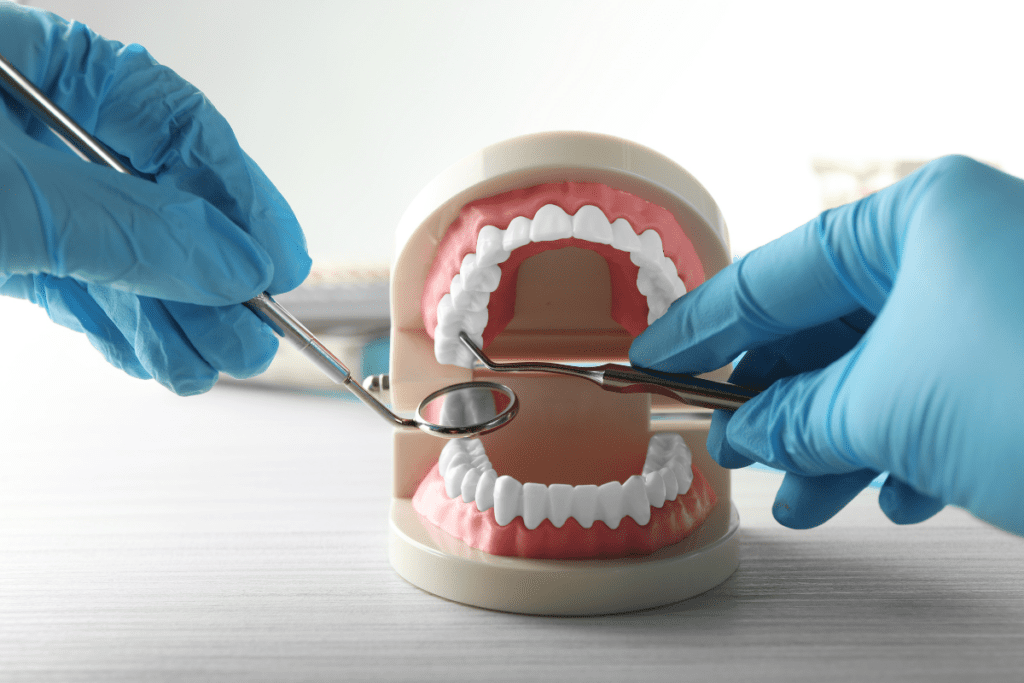
How long does a dental bone graft take to heal?
Healing times can vary, but typically you’re looking at 3 to 6 months before the bone is ready for further dental procedures.
Factors Affecting Healing Time
- Health of the patient.
- Type of graft used.
- Compliance with post-op care.
How long do stitches stay in after a dental bone graft?
Stitches usually dissolve or are removed within 7 to 10 days, depending on the type used and the healing progress.
Post-operative care for Stitches
- Keep the area clean.
- Avoid disturbing the surgical site.
- Follow up with your dentist.
Where does the bone graft come from for dental implants?
The source of bone for dental implants can vary significantly based on the patient’s health, the extent of bone loss, and the specific dental needs.
Sources of Bone for Grafts
- Autografts: These are taken from another part of your own body, typically from areas like the chin ramus (back part of the lower jaw) or the hip. Autografts are the gold standard since it is your bone, so rejection is less likely to occur. However, this method involves a secondary surgical site which can increase recovery time and potential discomfort.
- Allografts: These are obtained from human donor sources. The bone is meticulously processed, made sterile, and demineralized to assure safety. Allografts eliminate the necessity of a second surgical site but may pose a slightly higher risk for disease transmission or rejection as compared to autografts. They are frequently employed when larger quantities of bone are needed or when the patient wishes to avoid extra surgery.
- Bone from animals, most often cows (bovine), is processed to be biocompatible with human tissues. Xenografts represent the alternative when human bone is not available or preferred. They are treated to remove any organic components that could lead to rejection and are focused on providing a scaffold for new bone growth.
- Synthetic Bone Grafts: These are materials that have not been discussed previously and involve man-made materials that mimic the properties of natural bone. They can be advantageous because of unlimited supply and no risk of disease transmission; however, they might not integrate as well as natural bone.
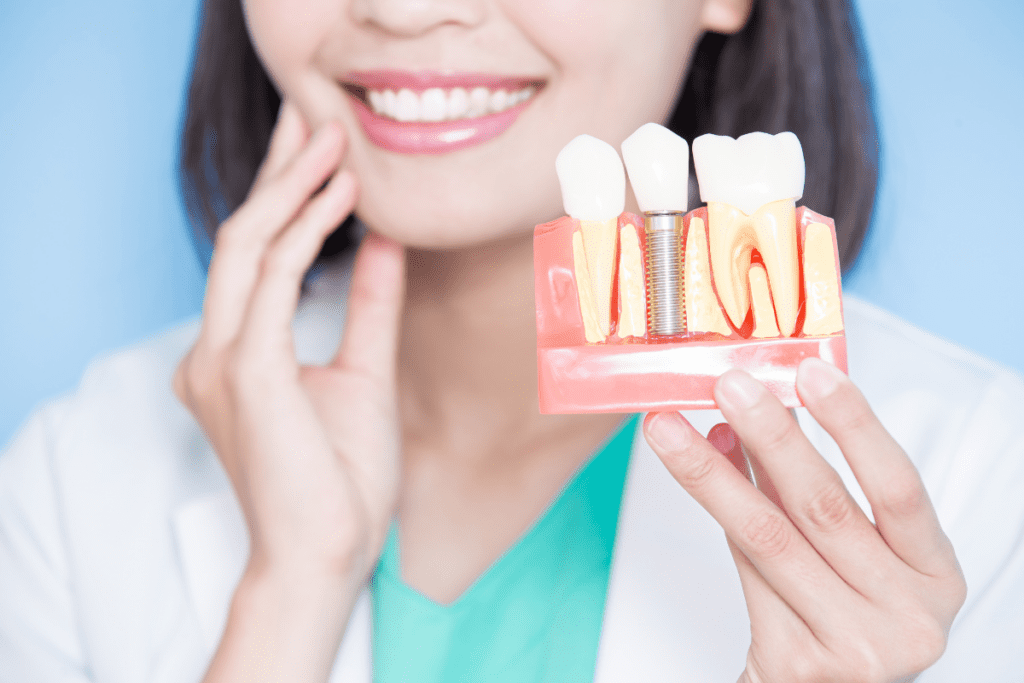
This source of bone grafts will be reiterated and elaborated upon in the context of dental implants.
- Material Selection Based on Implant Requirements: The material selection is based on the implantation site, the patient’s bone quality, and the dental implant procedure. For example, maxillary sinus augmentation may allow the use of different graft materials compared to a bone graft decedent for single tooth implantation.
- Bone Graft Source Customized for the Patient: The source of each patient’s bone graft is customized according to individual health assessments done for bone density, infection risk, and the overall strategy for dental health.
Can you get a dental implant without a bone graft?
While bone grafting is commonly associated with dental implants, it’s not always necessary.
When Bone Grafting Isn’t Needed
- Adequate Existing Bone Structure: If you have sufficient natural bone height, width, and density, you might proceed directly to implant placement.
- Use of Shorter Implants or Different Techniques: Modern dental technology includes shorter implants or zygomatic implants which can anchor in the cheekbone, bypassing traditional bone grafting needs.
- Mini Implants: These are smaller and can be used where bone volume is limited, though they might not support all types of prostheses.
- Immediate Loading Protocols: In some cases, implants can be placed and loaded with a temporary prosthesis immediately, if the bone quality and quantity are suitable, and stability is achieved during surgery.
- Bone Expansion Techniques: Instead of grafting, some techniques involve expanding existing bone to accommodate an implant.
This detailed approach ensures that patients in San Diego, especially around Clairemont Mesa, receive personalized and effective dental treatments that consider both their health and financial concerns. Schedule your consultation today to explore your options for dental implants with or without bone grafting at Serena Family & Cosmetic Dentistry.
FAQs
How much does bone grafting cost in San Diego?
Costs can vary based on the complexity of your case. At Serena Family & Cosmetic Dentistry, we offer competitive pricing and work with most insurance plans to make treatments accessible.
Can I eat normally after a bone graft?
Initially, you’ll need to stick to soft foods. Over time, you can return to your normal diet as advised by your dentist.
Is bone grafting painful?
There’s usually some discomfort, managed well with modern anesthesia and post-operative care. We ensure your comfort throughout the process.
How do I know if I need a bone graft?
- A thorough examination by a dental professional, like those at Serena Family & Cosmetic Dentistry, will assess your needs.
Conclusion
In San Diego, particularly around Clairemont Mesa, your dental health impacts your lifestyle and confidence. Bone grafting at Serena Family & Cosmetic Dentistry not only promises a brighter smile but also a healthier life. Don’t let dental issues stress you out. Schedule your consultation today to see how we can transform your dental health with treatments that fit your insurance and budget.


